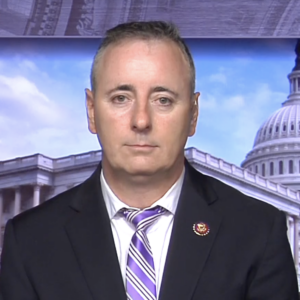Several members of Congress are asking the Environmental Protection Agency (EPA) to do more to address the problem of PFAS — man-made “forever chemicals” that pollute parts of Montgomery and Bucks Counties.
The letter to EPA Director Michael Regan was signed by Rep. Brian Fitzpatrick (R-Bucks), Rep. Madeleine Dean (D-Montgomery), and Rep. Susan Wild (D-Lehigh).
While the EPA issued guidance on the chemicals in April, the letter urged the agency to update it to include “important safeguards” because the regulations in place now do not cover most of those discharging the chemicals since they operate in 47 states with their own rules.
The letter asks EPA to “clarify” which entities “have an ongoing obligation to disclose PFAS pollution” as part of an existing permit and not wait for the permit to be renewed.
It also asks that “clear requirements” be specified for “Technology-Based Effluent Limits (TBELs) on a case-by-case basis. That would “help permitting agencies across the country and dramatically reduce PFAS pollution.”
The lawmakers also request that PFAS polluters clean up their wastewater and not depend on local treatment plants.
Manufacturers and the Department of Defense should bear the cost of treating the polluted water, not local, publicly owned water systems, the legislators say.
“The EPA has an opportunity to help permitting agencies across the country and dramatically reduce PFAS pollution,” the letter said.
“PFAS pollution is a serious threat to the communities we represent. We thank you for taking this crisis seriously and urge you to use your existing authorities under the Clean Water Act to make meaningful reductions in PFAS exposure in the near term,” the letter stated.
In March, the Bucks County commissioners and District Attorney Matt Weintraub filed suit against various PFAS manufacturers to try to get compensation for cleaning up the dangerous chemicals that were used in firefighting.
The PFAS chemicals are linked to kidney cancer, developmental disorders, and high cholesterol. PFAS chemicals in firefighting foam used at the Naval Air Warfare Center in Warminster and Naval Air Station Joint Reserve Base in Willow Grove (both now closed) are considered the principal source of PFAS contamination in nearby communities.
PFAS chemicals are carbon-chain compounds useful for their indestructible and non-slip qualities. They repel water and grease and resist heat degradation. Therefore, those substances are used in many industrial and consumer product applications and are present in many products, including clothing, carpeting, cooking pots, and food liners. There are more than 4,700 PFAS compounds in existence.
“PFAS describes not just one chemical, but a whole array of different chemicals that have certain similar chemical structures and properties,” said David Savitz, Ph.D., an investigator with the Multi-site Health Study and a Brown University professor of epidemiology.
State Rep. Todd Stephens (R-Montgomeryville) has been working on the PFAS problem for years.
“These chemicals, once they’re in the ground, they don’t stay put. They travel in the aquifer. It’s not isolated to just one community. There’s a lot of remediation that’s been underway in the surrounding communities as well,” he said.
Please follow DVJournal on social media: Twitter@DVJournal or Facebook.com/DelawareValleyJournal

